Warts are not only manifestations of papillomavirus infection, but other various neoplasms on the skin. These neoplasms also include red warts, which have nothing to do with the papilloma virus.

Содержание:
What is it, and how is it different from moles and papillomas
The main difference between red formations from papillomas and moles is that they grow from the walls of blood vessels. This actually explains the color of the neoplasms.
Initially, the growth looks like a small dot, which then grows and can reach various sizes. In this case, the red wart may look like a spot, or it may slightly protrude above the skin surface.
Varieties of growths on the body
Similar formations can be observed in men and women, even in children, they are divided into two main types, according to which benign neoplasms can be distinguished from other skin defects:
- flat – the structure is dense, outwardly resemble moles;
- cavernous – rise above the surface of the skin, grow outward.
Combined elevations are also diagnosed – a combination of a simple and cavernous neoplasm, as well as mixed ones – in addition to blood vessels, they include nervous and muscle tissue, such neoplasms are called hemangiomas.
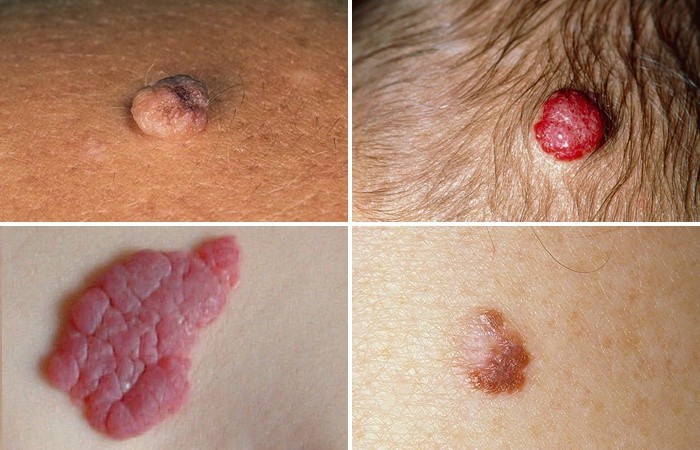
By appearance, red warts are classified as follows:
- flat;
- branched;
- pineal;
- knotty.
I must say that the type of red wart does not matter to the patient himself, this information is needed only by a specialist in order to determine which method of removing the skin growth will be more preferable.
Red warts are an accumulation of small blood vessels in a group, what the mechanism of this association is not yet known to science, but some experts believe that this phenomenon may be caused by the influence of certain protein structures that are synthesized in utero – in the placenta.
Main locations
Very often, red warts appear on the scalp, on the face, on the neck and chest, on the shoulders and back. Often these neoplasms can be seen in other places. A favorite place for the occurrence of such growths are zones with thin skin and closely spaced vessels.
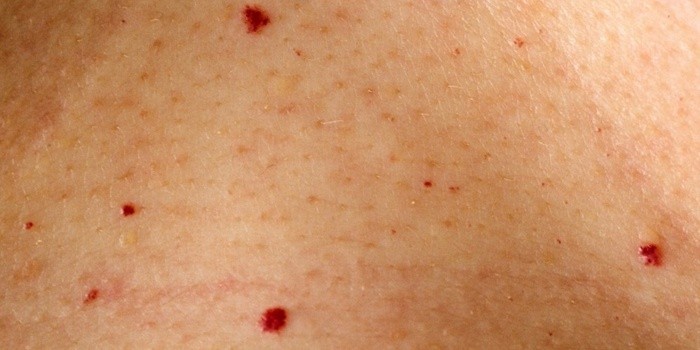
Causes of occurrence and methods of infection
As already mentioned, scientists have not been able to establish the exact causes of red warts to date.
But provoking factors are known that can give impetus to the occurrence of this pathology:
- Mechanical damage . Bites, cuts, cracks, scratches and irritations on the skin can destroy the capillary network.
- Rapid weight gain or loss . This leads to the fact that in certain places the skin is stretched, and small capillaries break.
- Hormonal disorders . They can be provoked not only by diseases of internal organs and systems, but also by physiological conditions – pregnancy, menopause.
- Malfunctions of the liver and pancreas .
- The growth of a malignant tumor in the body .
Can they appear in women during pregnancy?
During pregnancy, the female body undergoes a large number of changes, they mainly relate to the hormonal background. These changes can trigger the appearance of red warts.
In addition, in a pregnant woman, the skin on the abdomen is strongly stretched and thinned, therefore, small capillaries can be damaged, which is also a provoking factor in the formation of red warts.
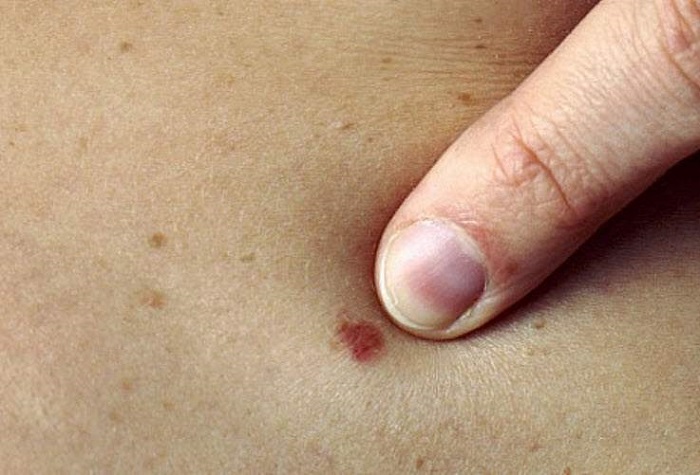
Why do they appear in children?
In childhood, this disease can be associated with the following reasons:
- the body’s response to hypoxia;
- genetic pathologies in the development of vascular tissue.
Since red warts consist of vascular tissue that is filled with blood, and there is no infectious agent in them, they cannot be infected.
signs
Red warts do not manifest themselves symptomatic in any way, they do not physically interfere, and the maximum that a person can worry about is a cosmetic defect.
However, the manifestations of neoplasms may depend on the location, structure and characteristics of the course, for example:
- on the neck , can put pressure on the trachea and interfere with normal breathing;
- near the eye or in the ear area may interfere with vision or hearing.
If red warts are located on the internal organs, they can disrupt their functionality, such neoplasms wag especially negatively in childhood – during the growth period.
Options for the development of warts without treatment:
- an increase in the size and number of neoplasms;
- for a long time everything will remain unchanged;
- self disappearance.
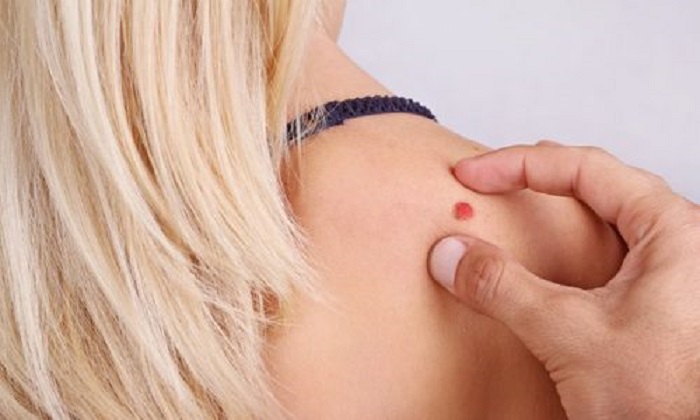
Options for the course of pathology during treatment:
- neoplasms completely disappear at the very beginning of therapy;
- warts disappear gradually as treatment progresses;
- warts remain resistant to treatment.
Speaking about the unpredictability of red warts, it must be said that even after a complete cure, a relapse is not ruled out.
What is the danger of their occurrence
In the vast majority of cases, red warts are benign neoplasms, but sometimes they can lead to complications:
- Neoplasms can become inflamed – sores, erosions and bleeding wounds occur.
- Large neoplasms are of great danger, since they are more prone to injury, and due to the large accumulation of blood vessels, it is quite difficult to stop bleeding.
- If the integrity of the formation is violated, it is possible to attach a secondary infection, with all the ensuing consequences.
If the wart grows rapidly and has reached a large size, it makes sense to conduct a biopsy and histological analysis in order to exclude an oncological process.
Neoplasm diagnostics
Diagnosis of red warts on the body is carried out by a pediatrician, dermatologists and a surgeon, if a neoplasm has arisen on internal organs, one should contact narrow specialists.
Diagnostics consists of the following studies:
- initial inspection;
- ultrasound;
- dermatoscopy is a non-invasive procedure;
- angiography – a study of the vessels that are adjacent to the neoplasm, it is possible to conduct a study with a contrasting liquid.
If the neoplasm on the skin began to change – bleed, increase, color or shape changed, pain or discomfort appeared, you should definitely consult a doctor.
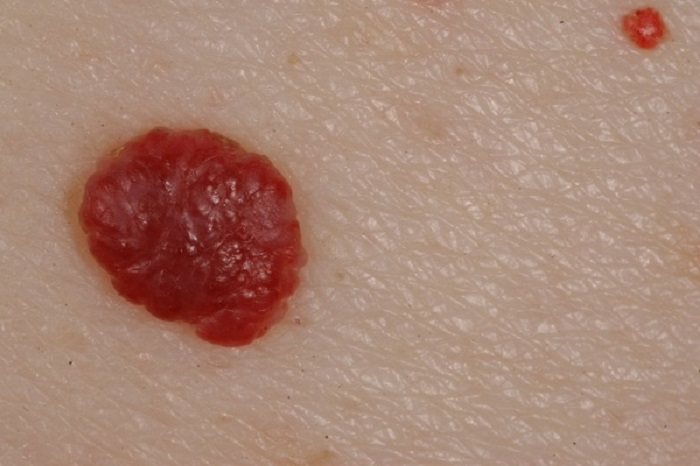
Self-treatment is strictly prohibited, since therapy in each case is selected individually, in accordance with age, immune status, neglect of pathology, and so on.
Treatment
As a rule, the treatment of a red wart is prescribed when it causes physical or cosmetic discomfort. In other cases, nothing needs to be done.
Medical therapy
Conservatively, red warts are treated with the following medicines:
- Hormones . This is the most effective therapy, but the drugs in this group are selected strictly on an individual basis after the necessary diagnosis, in addition, hormonal treatment must be monitored by the attending physician.
- sclerosing therapy . Subcutaneous administration of ethyl alcohol is carried out. Thus, scar tissue is formed, which compresses the blood vessels. As a result, the neoplasm cells die. Despite the simplicity of this procedure, it should be carried out only in stationary conditions.
Surgical removal
You can remove red warts in the following ways:
- Cryodestruction – neoplasm cells are frozen with liquid nitrogen.
- Electrocoagulation – the neoplasm is cauterized, while there is a simultaneous sealing of the vessels. The disadvantage of this removal is that noticeable scars remain after the procedure.
- Laser coagulation is a gentle method of removal, so it can be used in relation to children, and even remove neoplasms on the delicate skin near the eyes. It will take several procedures with an interval of a week.
- Surgical excision – used in the presence of large red subcutaneous warts. Removal is carried out with a scalpel at a time. Minus – after the procedure, a scar or scar remains.
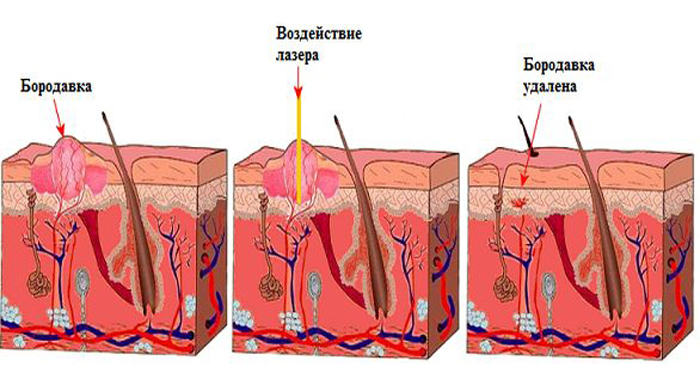
ethnoscience
Traditional medicine offers the following methods of treating red warts:
- rub the wart with onion juice twice a day;
- apply compresses with honey, castor or linseed oil;
- take a tincture of wormwood;
- make a bandage from kombucha.
However, it must be said that traditional medicine does not see the point in treating the red wart in folk ways, since it is inherently different from ordinary warts that are caused by viral agents.

Prevention
Since the exact causes of red warts are unknown, there can be no special preventive measures.
The only thing that can be advised is to carefully monitor the state of your health, treat hormonal disorders on time and correctly, control chronic pathologies, and regularly undergo medical examinations.
Possible complications and precautions
Red warts can be a signal for the development of diseases such as rheumatoid arthritis, lupus erythematosus, Henoch-Schonlein disease.
Such neoplasms may also indicate a violation of blood circulation. In children, red warts around the eyes, ears, or nose can cause problems with vision, hearing, or smell.
Self-removal of warts is completely excluded, since there is a risk of severe bleeding, infection and the development of an inflammatory process. In addition, by removing warts on your own, you can provoke active growth and an increase in the size of the neoplasm.
I must say that if the formations of red color do not interfere with the usual way of life, these elements should not be disturbed, since they do not pose any danger to health. If, in addition to them, there are other suspicious symptoms, a visit to the doctor should be mandatory.
So, you need to remember that red warts have nothing to do with the papillomavirus, and, therefore, cannot be transmitted from person to person.
But, like any other skin growths, they can cause certain inconvenience to a person. In order to completely eliminate the negative consequences of red warts, you need to contact a specialist in a timely manner, since it is impossible to visually determine the nature of the neoplasm – special laboratory tests are needed.







